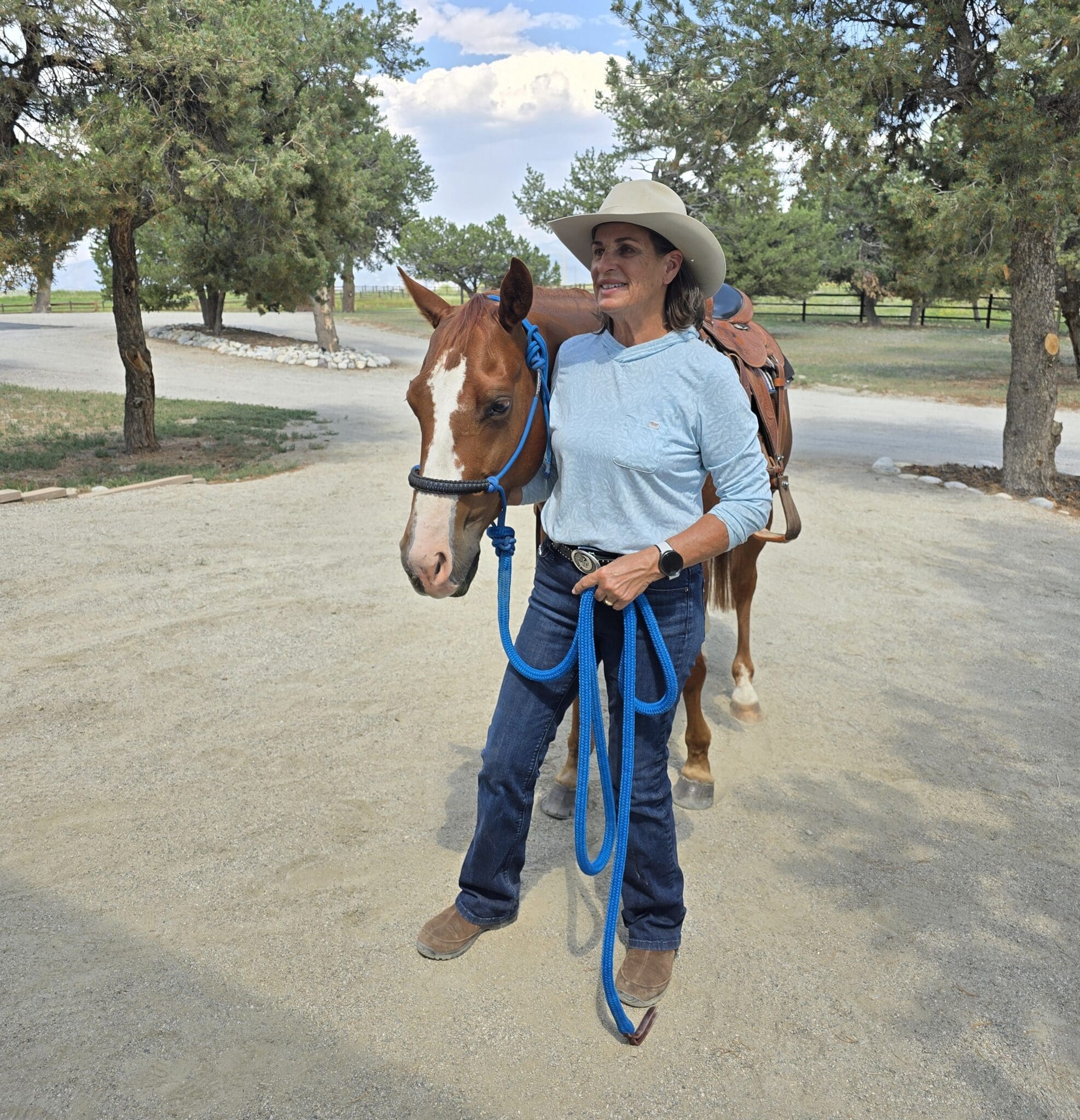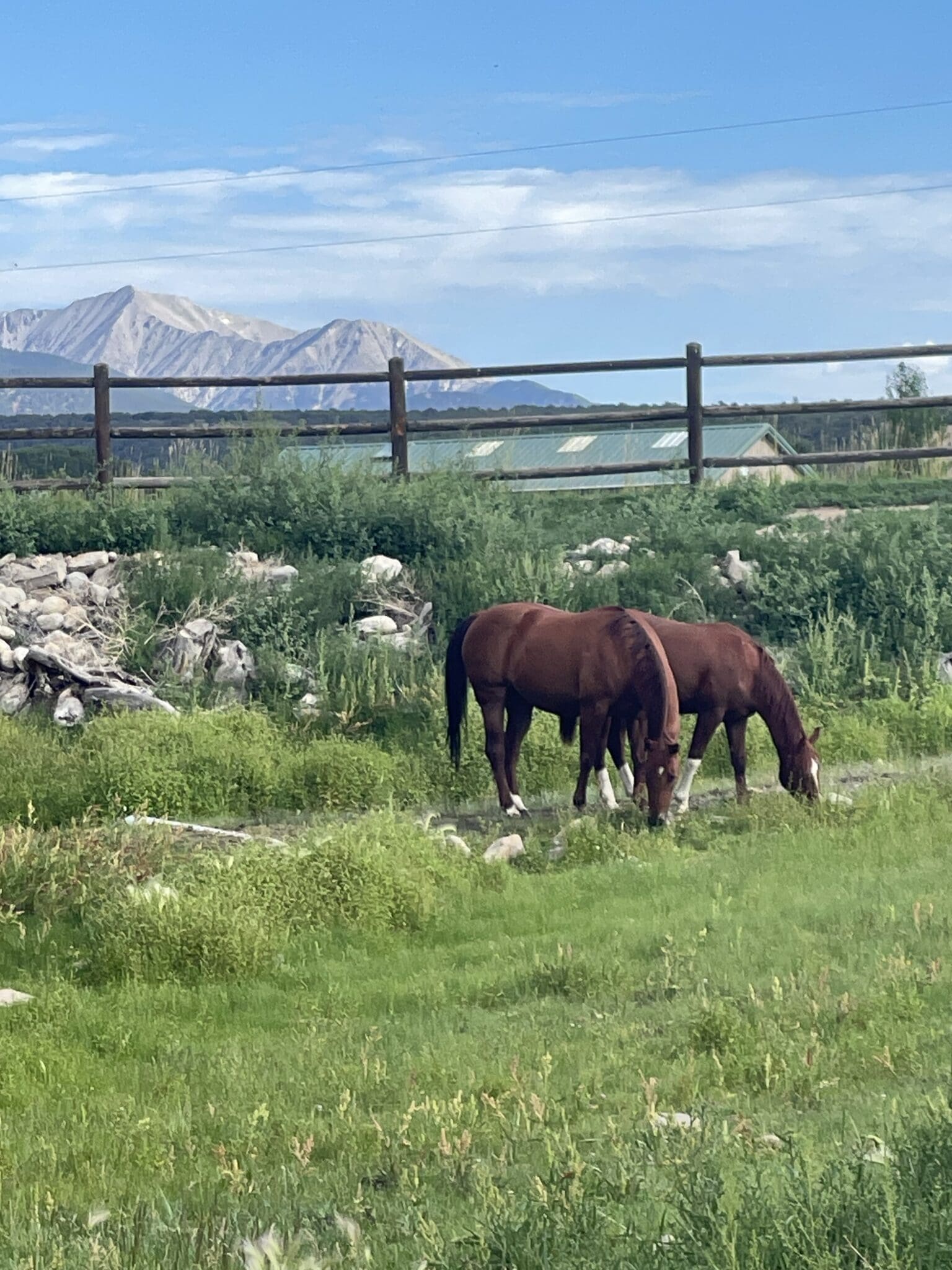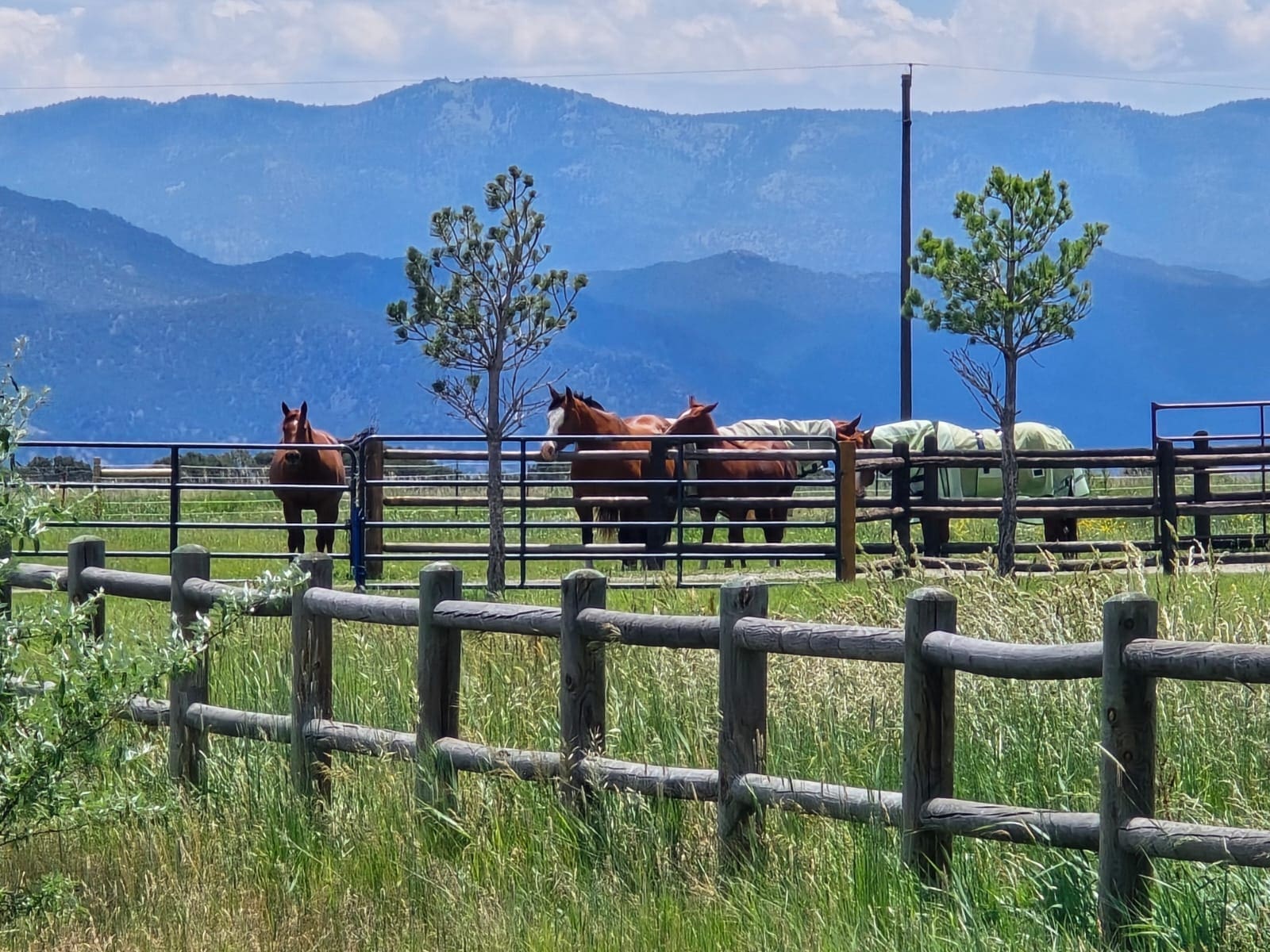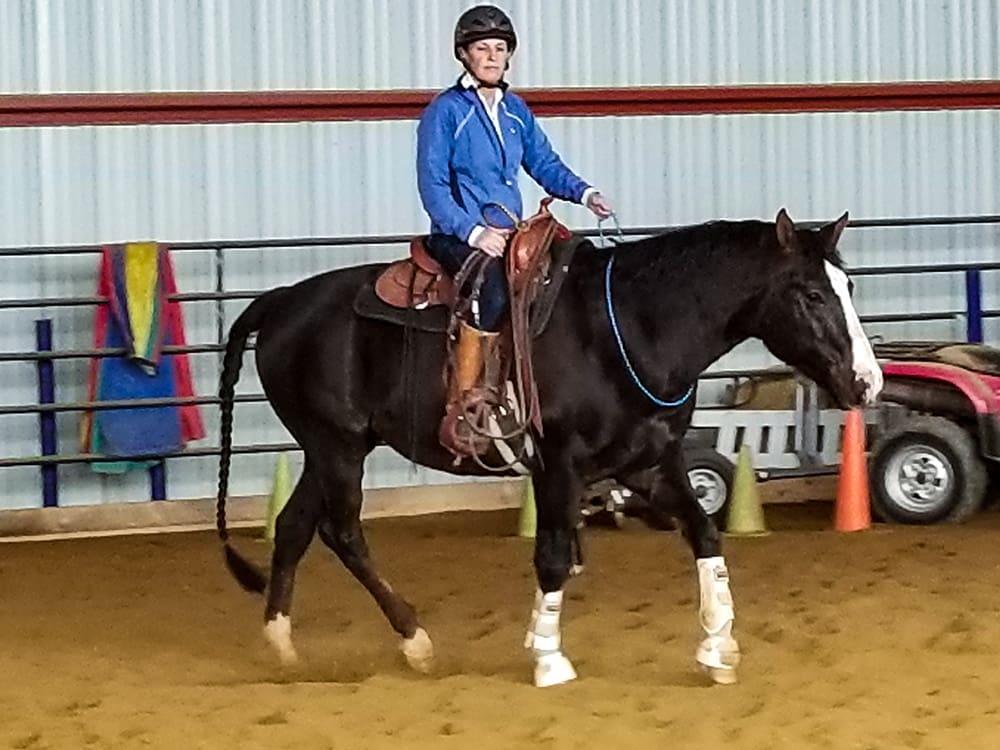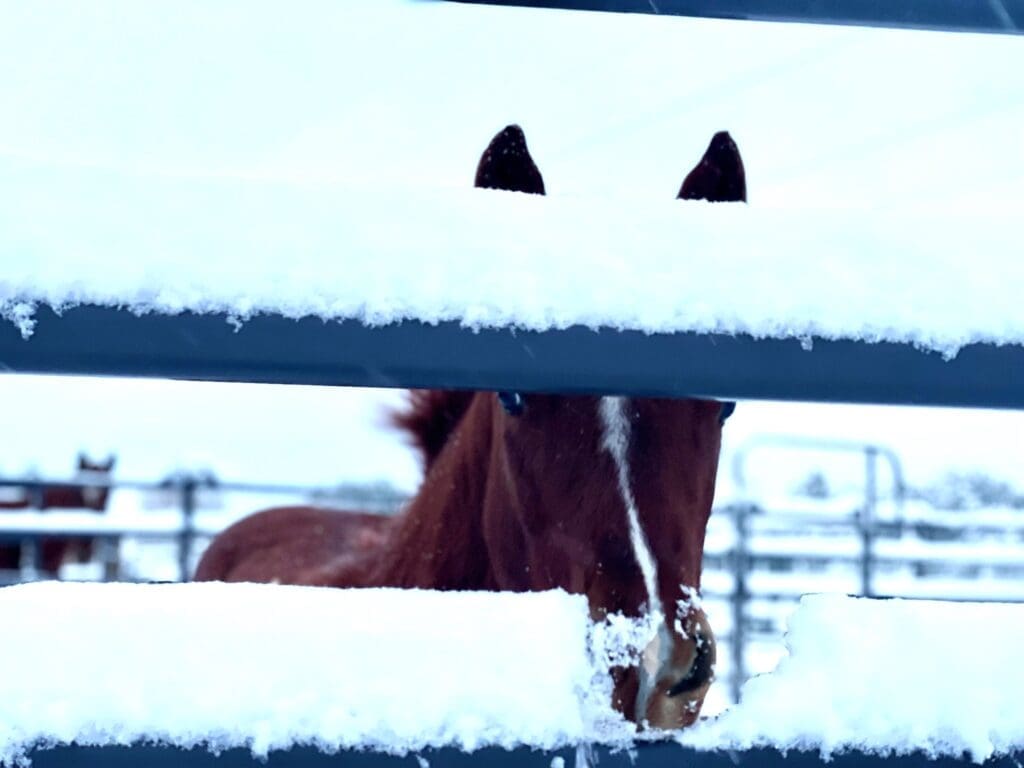
Rip’s first snow day!
A Foal Becomes a Weanling
Lately, I’ve been busy washing, drying, folding, storing, and organizing all the blankets in the barn. Our horses have a lot of apparel for all four seasons. No one likes doing this job. Consequently, the blankets get very dirty. But once I get started on a big project like this, I find it strangely gratifying to get it done.
Blankets tend to multiply in barns because some of us prefer to buy new blankets rather than wash a stinky, mud-caked one or repair a ripped one. Knowing that cleaning blankets is not everyone’s idea of a good time, I made this video a few years ago, hoping to share some information and help inspire you to tackle this dirty job.
My tack and feed rooms are newly remodeled and reorganized, with a new, high-capacity washing machine installed. I found I could no longer tolerate the mountain of filthy blankets in the corner, some of which hadn’t been used in years. No one ever bothered to wash and store the filthy blankets belonging to the now long-dead senior horses. Just toss them in the heap.
It took me a few weeks of diligent work, prepping, washing, and hanging the heavy blankets out to dry, but the mountain is finally gone. I’ve got dozens of horse covers cleaned, folded, and sorted into bins. One bin is for sheets, one for mid-weights, and one for the heavies. The winter blankets that are currently in use are fitted, labeled, and hanging by each horse’s stall, just in time for the onslaught of winter.
Last week, our warm, dry autumn abruptly turned towards winter, with an 18” dump of snow and lows in the teens. Rip had a blast on his very first snow day, which is good news because he’ll be seeing a lot more of it soon. But he won’t wear a blanket this year, since his wooly weanling coat will serve him just fine.
We’ve been handling Annie’s colt Rip since the day he was born, but we’ve never taken him too far away from mom, nor have we made any demands on him—always allowing him to act like the baby horse that he is.
By now, Rip is comfortable with humans and is desensitized and habituated to being caught, putting the halter on and off, being touched all over, and holding still momentarily. He has a rough idea of how to walk alongside his escort as we transit from point A to B. That’s all he has needed to know, up to now.
Soon, we’ll be weaning Annie and Rip, so I’ve been ramping up Rip’s halter training. Gradually, we’ve been walking farther away from his dam as we hone his lead-line skills. I’ve also begun introducing some intangible life-lessons that are not always easy for youngsters to learn. Important lessons, like controlling your instinctive impulses to bite, strike, kick, and bolt, and <cue the music> “You don’t always get what you wah-awn-t.”
Speaking of that, yesterday I started teaching Rip what it will be like to stand tied like the big horses. My method is not unlike teaching a toddler to ride a bicycle with training wheels. Naturally, I think our little colt is exceptionally talented and smart, but honestly, he figured out the lead rope dilemma quickly. Watch this video, and you will see what I mean…
That was just the start of Rip’s introduction to big-boy skills. I’ll be discussing this process in great detail in my upcoming podcast, which will be released soon. Ride On with Julie Goodnight is one of the most popular equestrian/horse training podcasts, with hundreds of thousands of downloads, and it’s available anywhere you listen. Make sure you subscribe (it’s free!), so you get notices when new episodes drop.
A foal–let’s call it birth to six months of age– is too young and fragile to start the kind of training I am doing with Rip now. Its younger brain is already overloaded, just learning how to cope in the strange new world. However, the difference between a foal and a weanling is huge; as is the difference again between a weanling and a yearling—both mentally and physically.
Weanlings are roughly six to ten months of age, and they are frisky, strong, and fast. Their minds are still too immature for serious training, but it’s an ideal time to introduce basic ground manners. Then as yearlings, they’ll learn even more manners. Under-saddle training will still be a couple years down the road.
I call this early stage of training “Kindergarten for Horses,” and sometimes much older horses need Kindergarten too (basic ground manners)! I’ve written, recorded, and demonstrated a lot on this subject and we offer copious resources about it in my online Academy.
If you aren’t a member already, sign up here so you won’t miss any installments of my foal handling series. https://signin.juliegoodnight.com
Rip is about to turn six months old, a standard age for weaning a foal from its dam. This is when a foal becomes a weanling. For various reasons, a foal might be weaned as early as four months of age, with care taken to make sure the foal is nutritionally stabilized on hay and concentrated feeds first.
Knowing I would not be in a hurry to wean Rip, I’ve let him develop his eating habits naturally, by eating alongside his dam. And just like his mom, Rip has become very enthusiastic about consuming his food! He’s still nursing occasionally, but it’s more for comfort than sustenance now.
Rip spends most of his daylight hours nowhere near Annie, choosing instead to hang with ‘the dudes’ (older geldings). All three of our geldings keep a watchful eye on Rip, and they tolerate his youthful antics, scold him when he deserves it, and occasionally rough-house with him. Annie is far less attentive to Rip these days, and she’s getting cranky when he nurses.
All the signs are there. It’s time to wean them!
I’ve weaned dozens of mares and foals in my career, but most of them were owned by other people. This is the first time I’ll be putting a mare and foal back together, shortly after weaning. Usually, the separation is more permanent. My primary goals for weaning them are to break Rip’s habit of nursing and allow Annie’s milk to dry up. Secondarily, I want them to gain some independence from each other so I can easily separate them.
I’ve spent a lot of time thinking about it, tossing about several options. I’ve concocted an elaborate and heavily scripted plan for weaning, with as little stress as possible on each of them. I’ll let you in on the full plan next month, when I can report not only the details of my weaning plan, but also how well it worked.
Meanwhile, just for fun, check out this video of Rip playing in the snow last week…
